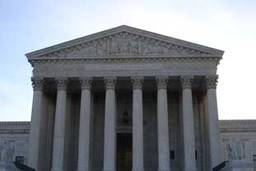
While in law school in Washington, D.C., in the late ’60s, I heard Justice William O. Douglas explain at a public forum that his support for the Warren Court’s “criminal law revolution” was undergirded by his fear that the nation’s police stations were staffed in no small part by “crypto-fascists.”
Though his pithy phrase never found its way into any of the Warren era’s cases – many of which solidified the Constitution’s protection for those accused of crime – Justice Douglas shared with his colleagues a passion for the Founding Fathers’ luminous idea that the Bill of Rights was created to restrain, and sometimes thwart, the actions of government officials.
Along with Chief Justice Earl Warren and Associate Justices Hugo Black, William Brennan and Thurgood Marshall – as well as his more cautious brethren, Justices John Marshall Harlan and Felix Frankfurter – Douglas and his colleagues viscerally understood Chief Justice John Marshall’s famous 1819 declaration that “it is a Constitution we are expounding.” They protected and expanded free speech rights for antiwar and civil rights activists, and drew within the Constitution’s protections many groups previously excluded: racial minorities, women, prisoners, probationers and school children.
The Bush-Roberts Court rejects this commitment to liberty and equality. Under Chief Justice John Roberts and his major domo Antonin Scalia, “the spirit of the laws” (to borrow the 18th century French philosopher Montesquieu’s apt phrase) exalts order over liberty, and institutional prerogatives – governmental or private – over the individual.
There are occasional happy exceptions to this: The current court preserved confrontational rights for the accused in criminal trials and sought to ameliorate the harshness of federal sentencing guidelines. And the 2004 Guantánamo cases curbed some of Bush’s more odious powers.
Still, folk wisdom supplies the most charitable assessment of this court: Even a blind pig finds an acorn now and then.
— — — — — — — — -Where does this deference to institutional power and prerogatives, with its accompanying hostility toward “average people,” come from? In 1921, Justice Benjamin Cardozo suggested an answer that was as applicable then as it is today: “The great tides and currents which engulf the rest of men do not turn aside in their course and pass the judges by.”
Tellingly, no member of the current Supreme Court has ever defended a person accused of committing a felony, which means they have no experience with the dynamics of a criminal trial and have never rubbed shoulders in a dilapidated cell block with the poor and battered souls, predominantly of color, who are hauled into the nation’s criminal courts. Roberts made his fortune representing the interests of corporate America, and all members of the court were corporate, academic or governmental careerists. With the exception of Justice Ginsburg’s background litigating for women’s reproductive freedom and fairness in the workplace, no current justice came to the high court with a reputation as a champion of civil rights or poor people.
Contrast the backgrounds of the Bush-Roberts Court with those who served prior to 1986, the beginning of the court’s demise, when Reagan elevated William Rehnquist to chief justice and appointed Scalia as associate justice. Where the Bush-Roberts Court is suffused with corporate parochialism, the Warren Court was worldly. In the aggregate, it included a former California governor (Warren); a country lawyer who defended accused moonshiners and striking miners, and later served in the U.S. Senate (Black); a brilliant strategist and litigator who kicked open the legal doors of school segregation (Marshall); a trial judge from a labor union household (Brennan); an anti-rackets prosecutor (Harlan); and a Harvard Law School professor who defended Sacco and Vanzetti (Frankfurter).
Contrary to the methodology of the Warren Court, the high court under Roberts follows in the tradition of Rehnquist. It scraps the teachings of the social sciences and ignores social realities when it suits its purposes. This is illustrated by a comparison of leading cases from the socially alert court of the Warren era and the reality-blind court of the past decade. In 1965’s Miranda v. Arizona, the leading decision on self-incrimination is written in a style understandable by anyone who can read a newspaper. At the same time, it grounds its conclusions on a thorough and thoughtful analysis of government and academic studies, court records and history regarding police brutality and the third-degree interrogations police employed to extract confessions.
Thirty years later, in Whren v. United States (1996), Scalia saw no need to consider any data on racial profiling and the “driving while black” phenomenon when he wrote for a unanimous court that rejected claims by two young African-American males who said they were victims of racial profiling during a traffic stop (lingering too long at a stop sign; failure to signal a right turn, etc.). The plain-clothes officers who stopped them were assigned to a special squad concerned with drug trafficking in a “high crime” area of Washington, D.C., and were subject to a department regulation that prohibited them from enforcing traffic laws unless they observed a violation that threatened public safety.
Scalia did not reference the race of the young men until halfway through his decision, and then he scoffed in his opaque and orotund style that the intent of the officers was of no constitutional consequence. Scalia and his colleagues, even the ones the media occasionally tags as “liberal,” submitted no commentary regarding racial profiling and police practices in minority neighborhoods. For a right-wing court, like a right-wing administration, an unacknowledged problem is one that does not exist.
Scalia, who remains the court’s designated hitter to swat the Fourth Amendment’s prohibition against unreasonable searches and seizures into oblivion, garnered unanimous decisions in other cases involving claims against the police. No relief from unreasonable searches, said a unanimous court, for a white couple that was rousted out of bed and forced to stand naked before police finally realized that the subjects of their search warrant were supposed to be African American (Los Angeles County v. Rettele, 2006).
Similarly in another opinion Scalia authored (United States v. Grubbs, 2006), a unanimous court informed police officers that they had no obligation to describe the triggering mechanism in so-called anticipatory search warrants. Police obtain these warrants after an officer’s sworn representation that, at some future time, criminal activity or evidence of crime will be at a particular location. But the Supreme Court has, in effect, made these warrants perpetual by declaring that a triggering mechanism (e.g. the arrival of a particular truck at a given location) need not be described. In fairness, it must be noted that Justice Souter, joined by Justices Ginsburg and Stevens, whimpered that the better practice is to include the triggering mechanism, but they nevertheless concurred.
— — — — — — — — -Not all the justices are always on the same page, but the court’s unanimous decisions reveal frequent collusion between the conservative majority and the liberal wing. And there are few significant ideological fissures in any of the court’s decisions.
The current justices are especially in lockstep with their endorsement of the existing economic order and their insensitivity to the problems of the poor and the middle class. While the Supreme Court has no mandate to redesign the economy, there are many instances where constitutional and statutory interpretation allow justices to use their discretion to choose between the predator and the prey. The Bush-Roberts Court hunts with the predator.
In 2007, in Long Island Care at Home Ltd. v. Coke, the Supreme Court unanimously held that ambiguous Department of Labor regulations exempted hundreds of thousands of home healthcare workers (mostly women) from minimum wage protection.
In a 2006 opinion for a unanimous court written by Roberts, the former corporate litigator, the court told taxpayers they had no right to challenge the State of Ohio’s tax abatements and investment credits extended to DaimlerChrysler. Taxpayers had argued that they and their communities would sustain injury because the less money DaimlerChrysler paid, the less money the state would distribute mandated revenue to its cities.
But Roberts and his colleagues offered a short lesson in neoconservative, supply-side economics: “The very point of the tax benefits is to spur economic activity, which in turn increases government revenues.” Apparently, the conservative activists of the Bush-Roberts Court have rejected the observation of Justice Oliver Wendell Holmes that “A constitution is not intended to embody a particular economic theory.”
When the DaimlerChrysler Corp. v. Cuno case is read together with Kelo v. City of New London (2005) – a controversial case permitting private homes to be condemned so that the land on which they sit can be transferred to a private developer – the result is a population stripped of all defenses against corporate power. Workers and taxpayers cannot fight against corporations that take property for the benefit of profit-making, and they are just as powerless to seek redress in court when a town’s officials give the store away to a corporation.
The Bush-Roberts Court also slammed the courthouse door shut on people challenging the Bush administration’s affirmative action efforts, which were really designed to insure that faith-based social programs would seek and obtain federal funding. Taking casuistry to new heights, the majority ruled in 2007’s Hein v. Freedom From Religion Foundation that because the funds were coming from the administration’s budget, there was no need to follow a Warren precedent, which allowed taxpayers to challenge congressional appropriations that fund textbooks for religious schools.
With rare exception, the Bush-Roberts Court has no inclination to restrain executive power.
It was this unbridled deference that led a unanimous court to uphold the Solomon amendment, which authorized a halt in federal funding for colleges and universities that barred military recruiters access to campus. An association of law schools had prohibited campus recruiting because of the military’s anti-gay “don’t ask, don’t tell” policy, but the high court – heedless of its own recent decision allowing the Boy Scouts of America to preserve its moral code by expelling a gay scoutmaster from its ranks, and unwilling to have the military rely on off-campus recruiting facilities – chose spinelessly not to defend the law schools’ efforts to protect a marginalized minority (Rumsfeld v. FAIR, 2006).
The Supreme Court’s reactionary agenda over the last decade has left few areas untouched by its restrictive reading of the Constitution. It has curtailed in various ways reproductive freedom, efforts to racially integrate schools, and First Amendment and privacy rights of high school students.
Devoid of passion for civil liberties and civil rights, and oblivious to economic injustice and inequality, this court will not change its direction any time soon. As for the possibility of change in the future, the task for progressives is to begin insisting that Democratic presidential candidates pledge now that any Supreme Court nominee during their administration will be drawn from the human rights, civil rights and racial justice communities. Not from the corporate structure that perpetuates the power of the elite.






